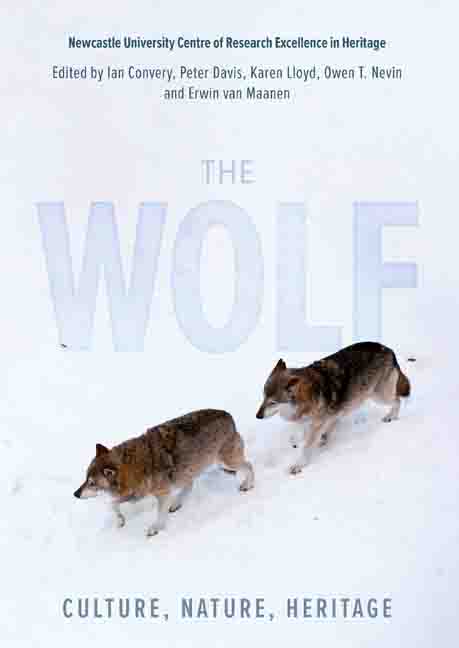Book contents
- Frontmatter
- Dedication
- Contents
- List of Illustrations
- Preface and Acknowledgments
- List of Abbreviations
- Poem: Trophic Cascade by Camille T Dungy
- Foreword
- Part I Imagining the Wolf
- Part II What Makes the Wolf
- Part III Return of the Wolf
- Part IV Personal Encounters
- Afterword: The Ecological Disadvantage of Living on an Island
- Glossary
- List of Contributors
- Index
30 - Úlfr and Gris: Spectral Animal Companions of the Atomic Priest
Published online by Cambridge University Press: 10 January 2024
- Frontmatter
- Dedication
- Contents
- List of Illustrations
- Preface and Acknowledgments
- List of Abbreviations
- Poem: Trophic Cascade by Camille T Dungy
- Foreword
- Part I Imagining the Wolf
- Part II What Makes the Wolf
- Part III Return of the Wolf
- Part IV Personal Encounters
- Afterword: The Ecological Disadvantage of Living on an Island
- Glossary
- List of Contributors
- Index
Summary
To the west of Cumbria, near Allithwaite, a precipitous limestone outcrop projects into Morecambe Bay. Humphrey Head is the very spot where, legend has it, the last surviving wolf of Cumbria was killed following an epic chase and heroic leap (Westwood and Simpson 2005, 136–7). The story, repackaged in a popular late-Victorian novella by Mrs Jerome Mercier (1900), is a melodramatic tale of romantic love, chivalry, and the final dreadful hunting and killing of the Last Wolf. Over to the east of the county lies Wild Boar Fell, where a similar legend tells of the last boar of England, killed here by Sir Richard Musgrave. Its tusk, once preserved with Sir Richard's corpse, is displayed at the parish church in Kirby Stephen (Westwood and Simpson 2005). The same church houses the famous Loki Stone (Bailey 1988), showing the binding of the Norse trickster god with the entrails of his son Nari, who had been disembowelled by his other son, Narfi, after his transformation into a wolf by the Asir (Orchard 2011, 96). Extinct in Britain, memories of these animals are preserved within certain Brythonic Celtic and Norse place names in Cumbria. To the south, close to a nuclear facility, is the famous Heysham Hogback Stone, a Viking grave marker that reveals mythic narratives involving both wolf and boar. The significance of these animals for the making of meaning through myth in relation to place across time (Trubshaw 2010, 11–14) underpins the art project that is Cumbrian Alchemy (2014–18).
Cumbrian Alchemy is a collaborative art project by American artist Bryan McGovern Wilson and British artist and academic Robert Williams. The project developed its archival collections3 to form complex relations between three streams of an enquiry exploring the confluence of nuclear and other power industries, archaeological monuments and folkloric or mythic traditions. The work was shown in a series of important national and international exhibitions and publications focusing on what has become known as Nuclear Cultures (Carpenter 2016).
- Type
- Chapter
- Information
- The WolfCulture, Nature, Heritage, pp. 347 - 362Publisher: Boydell & BrewerPrint publication year: 2023

